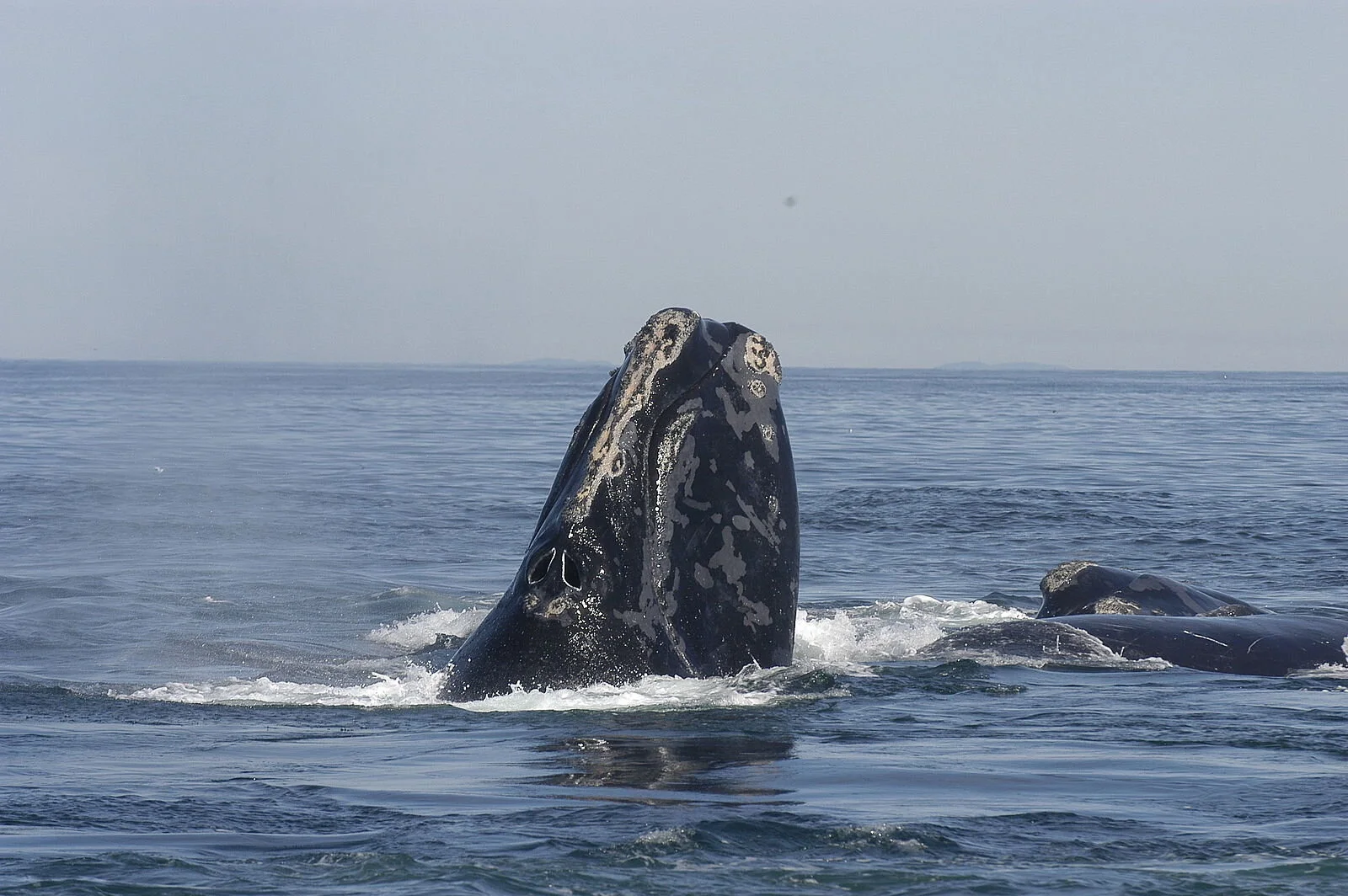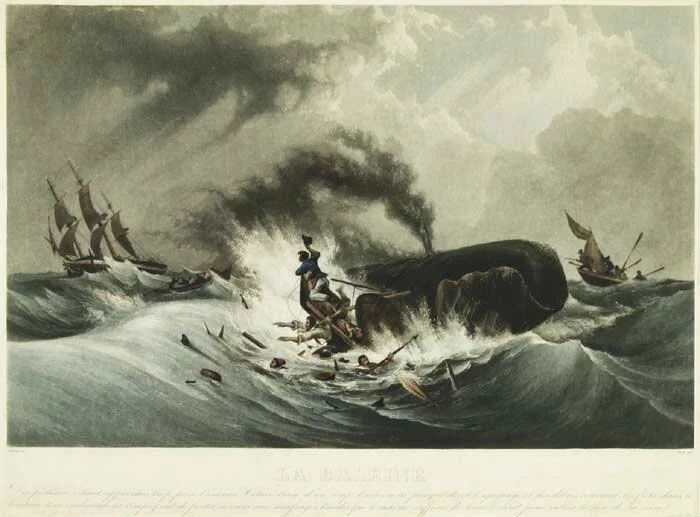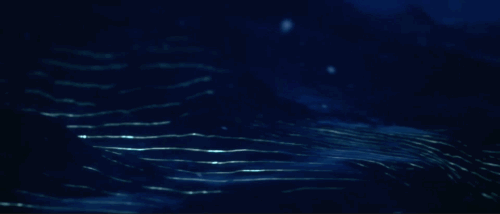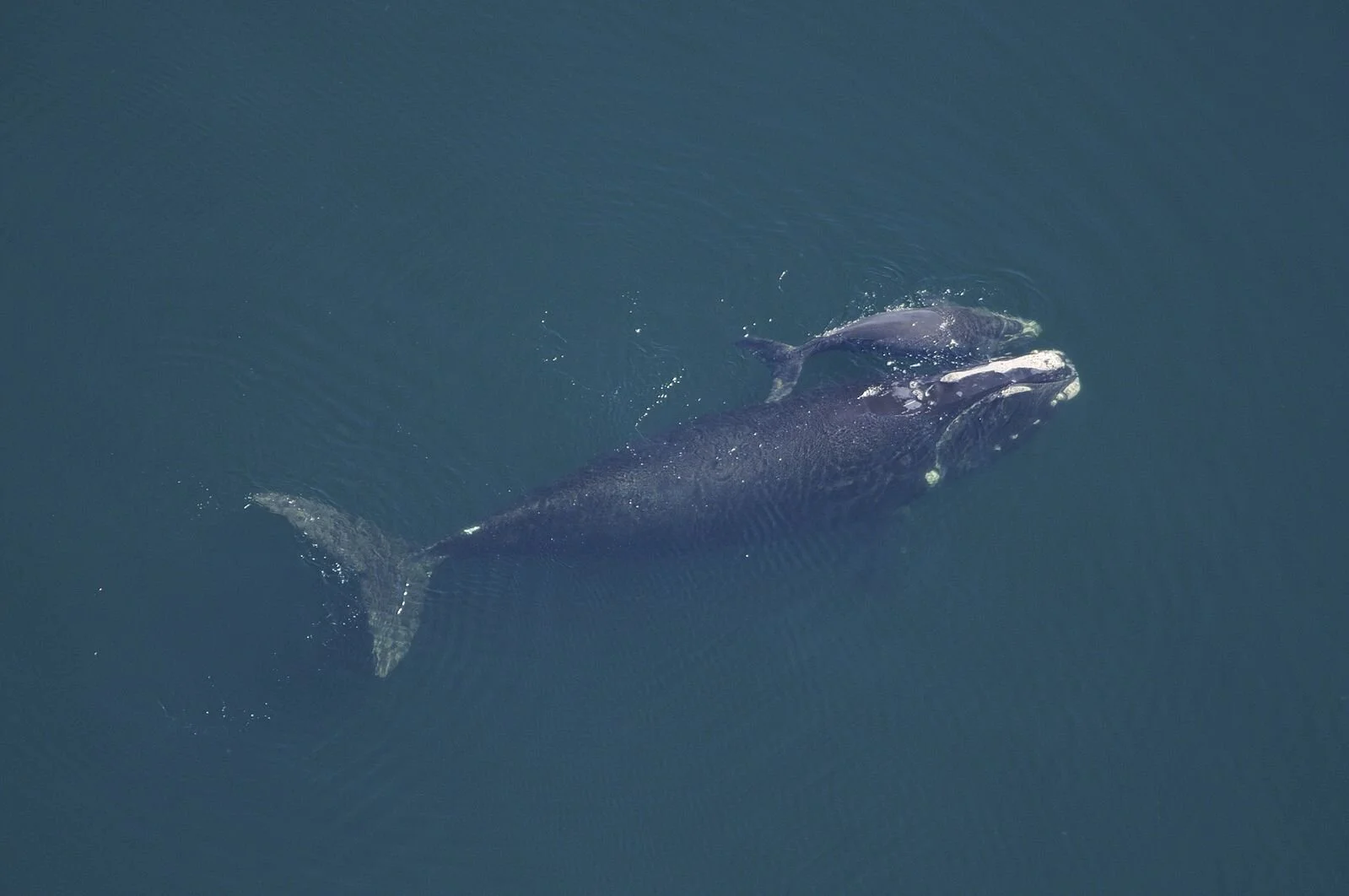Saving the Right Whale: AUV’s and the Future of Whale Conservation
When a species is on the brink, teetering at the edge of oblivion, every step towards conservation matters. This is particularly true for the North Atlantic Right Whale, a leviathan of ancient lore who is now among the most endangered mammals on the planet. Preservation of this species for future generations will require innovative and fast approaches to seemingly intractable issues like climate change. Decisive action to both reduce and maximally mitigate the common threats posed by noise pollution and ship strikes are required.
While addressing climate change will require time and collective action, curbing the rising levels of noise pollution and the omnipresent threat of ship strikes is well within our grasp thanks to recent advancements in maritime technology.
Here, we’ll briefly explore the story of the right whale and how technological innovations — particularly autonomous underwater vehicles — may help it endure for generations to come.
The “right” whale
Weighing in excess of 50 tons, and extending beyond 50 feet in length, the North Atlantic Right Whale is one of the largest animals this world has ever seen. Yet, spotting one is exceedingly difficult. There are likely fewer than 500 individuals alive today, spread out along the North American, Arctic, and European coastlines — the entirety of their North Atlantic habitat [refs 1,2].
The right whale gets its name from medieval whalers who saw it as being the most economically fruitful whale to catch, making it the “right” whale to hunt. With blubber more than a foot thick lining its body, the right whale could be exploited to produce massive amounts of oil that would then be sold for use in lamps, as a mechanical lubricant, and as an ingredient in medicinal ointments, cosmetics, soaps, and paint. The thick layer of blubber, too, meant that, unlike most other whales, right whales that had been killed would float [ref 1].
Hunting of right whales was practiced by indigenous communities for thousands of years, but this likely had no effect on the species’ longevity. In the ninth century, however, European sailors adopted whaling as a commercial venture. What followed was more than a thousand years of hunting on a cataclysmic scale and the decimation of right whale (and Bowhead) populations [ref 1].
Protection for the species wouldn’t be found in earnest until 1935 when the Convention for the Regulation of Whaling was signed by multiple nations, elevating the conservation of right whales to an enforceable policy and outlawing their killing [refs 1,3].
Over the following 70 years, further protection was provided by various legislative efforts, culminating in the designation of speed-restricted areas, rapid-alert systems that serve to help ships avoid collisions with whales and an increasing amount of research on this enigmatic species [refs 14].
But, to ensure this species’ survival, much more will be needed.
The soundscape of an endangered species
Conservation efforts have led to the formation of protected areas where right whales can calve their young, feed, and mingle without significant risk of being struck by fast-moving ships or encountering fishing gear.
However, like all marine mammals, the right whale’s environment is defined by more than water and space — sound is a critical part of how they navigate, hunt, and communicate [refs 4–6].
Sound is an impressively powerful way for energy to travel underwater. Unlike light, whose energy is quickly absorbed and dissipated by water molecules, sound can travel quickly over great distances in water. This has to do with the way sound energy is transferred between water molecules (a topic we covered more in our blog on Sound Beneath The Waves).
Because sound travels so well underwater, marine mammals have evolved to interact with their world primarily through the use of sound waves. For this to work, however, they need an environment with a relatively quiet soundscape.
The soundscape, or acoustic habitat, is the collection of sounds that can be found in an environment. Ambient sounds underwater may come from waves crashing at the surface, from bubbles gurgling out of volcanic vents, or from an army of snapping shrimp. All of these noises join together into a soundscape, but together they provide only a low level of ambient noise.
Animals like whales and dolphins have evolved to communicate within various acoustic habitats, in the same way that we’ve evolved to see above land under varying lighting conditions.
But a rising level of sound in the ocean is threatening many animal’s acoustic habitats and forcing them to venture into unfamiliar or dangerous waters in a bid to find quieter soundscapes where they can better communicate, navigate, and hunt [refs 5–8].
It’s not yet known how significantly sound affects the right whale’s protected habitat, but given research on other marine mammals, it’s likely that sound has the power to damage their hearing — effectively limiting their ability to communicate and hunt. Sound may well drive them from their protected space and push them into more dangerous regions where they may encounter ships and fishing gear [refs 4–11].
The inevitable tide of sound
In an ideal world, our technology and cultural practices would make it so that ocean habitats would be unaffected by human activity. This is unfortunately not the case.
For many good-natured reasons, humans are likely to continue exploring and making use of ocean space. In fact, it’s likely critical to human existence on Earth. One example is the development of offshore wind farms, which the Biden administration has emphasized with a 30-gigawatt-by-2030 goal — a national push to rapidly develop 30 gigawatts of electricity through offshore wind farms.
The massive energy potential in offshore wind farms would help to significantly reduce our reliance on fossil fuel-based energy and establish a durable renewable energy infrastructure in a short 10 years timeframe, a needed push to reduce our chances of a 2°C global rise in temperature.
Such development projects could have a massively positive world impact by reducing carbon emissions, but the many steps involved with developing wind farms can generate disruptive noise— noise that, if not mitigated correctly, may directly impact right whales.
The continental shelf that extends off the eastern coast of North America provides shallow waters that are amenable to development of wind farms. With the Biden administration’s 30-gigawatt-by-2030 goal, thousands of offshore wind turbines will need to be built within these shallow waters. Unfortunately, right whales also rely on these waters when migrating.
At the moment, many of the first wind farms to be developed are planned for the northeastern coastline. And while these projects will be extremely important for transitioning quickly to renewable energy resources, the noise from the development of offshore wind turbines may threaten migrating right whales.
It is imperative, then, that we develop ways to reduce and mitigate the impact of these types of projects as much as possible. One way to do that is through the use of autonomous underwater vehicles for carrying out critical survey work needed at every stage of the development process.
AUVs and the acoustic habitat
Whether you’re interested in building an offshore wind farm or studying the seafloor ecosystem, you’ll need to find a way to visualize the space you’re working in. As mentioned previously, in many instances light won’t do. Instead, we often make use of sound for all the same reasons that animals do: the physics of sound propagation underwater can be taken advantage of to gather data and, in a sense, see.
Historically, this took the form of low-frequency sonar systems that were mounted on the hull of ships or else attached to a dragline that was attached to a ship. Low-frequency sonar was necessary for these applications because low-frequency sounds can travel long distances without being absorbed by water molecules. High-frequency sounds, on the other hand, can only travel short distances, but often render much higher resolution data. In the right conditions, some low-frequency sounds — like the call of a fin whale — can travel vast, ocean-scale distances [ref 12].
Use of low-frequency sonar for visualizing the ocean floor, however, presents potential threats to marine wildlife, including right whales.
Low-frequency sonar is well within the audible range of marine mammals. Use of sonar in military and research exercises is believed to drown out communication between animals, cause confusion, and may even cause physical damage to the animals. Accordingly, low-frequency sonar has been linked to many instances of whale strandings [refs 10,11].
To avoid these issues, engineers have been working to develop technology that allows for the use of high-frequency sonar (using frequencies above 200khz) in an increasing number of applications.
One of the most recent advancements in this effort is the development of more advanced and reliable autonomous underwater vehicles that have built-in high-frequency sonar systems. Because these vehicles are not tethered to a ship, they can bring the sonar to the ocean floor, which means they can operate at lower power and make use of higher frequency sounds that are outside the auditory range of marine wildlife. This, in turn, also enables higher resolution data acquisition.
All of this is gained while reducing the impact to marine mammals’ auditory senses.
Additionally, these underwater vehicles have a greatly reduced risk of colliding and causing harm to wildlife. In a large study of 58 first-hand accounts of ships striking whales between 1885 and 2000, all of the lethal collisions involved ships that were traveling in excess of 10 knots (11.5 miles per hour), and 90% of collisions happened when the whale was not visible to the ship’s crew. These stark numbers highlight the threat posed to whales by ships, particularly those traveling at higher speeds [refs 1, 13].
AUVs can help reduce this threat. Vehicles like Bedrock’s Terrain Reconnaissance Inspection Platform Network-Class AUVs (T.R.I.P.N.-Class AUVs for short) make it possible to explore the ocean floor without the need for a ship. They allow different, lower-powered, higher-frequency sonars to be utilized — reducing the overall ambient soundscape. And the vehicle’s slow speeds underwater, combined with collision avoidance and intelligent situational awareness technology, make collisions exceedingly less likely, much less lethal.
To that end, AUV technology greatly reduces the number of opportunities for potential human-whale interactions. AUVs are self-driven and can operate independently of a ship. This means that teams looking to do underwater mapping — as would be needed in sites where wind farms will be built — no longer have to commission a ship, a crew to operate it, and won’t be delayed by changing weather conditions. In effect, this means more efficient mapping of the ocean floor and, importantly, decreased likelihood of encountering or harming marine wildlife.
A small step that matters
Following a thousand years of decline in population size, the North Atlantic right whale is in dire need of aid. It will require more immediate actions that help protect the whales and their habitats, even if these actions are small.
Using AUVs for underwater mapping is not in and of itself going to save the whales. However, using AUVs in these projects is a step in the right direction.
Many underwater projects require ocean floor mapping, and that can either be done with disruptive and potentially threatening technology, or it can be done with more advanced, environmentally-friendly vehicles.
At Bedrock Ocean Exploration, we believe in building a sustainable future and doing it right. That’s where our T.R.I.P.N-Class AUVs come into play.
To learn more about this type of advanced technology, read about Bedrock’s T.R.I.P.N-Class AUVs.
References
Laist, David W. North Atlantic Right Whales from Hunted Leviathan to Conservation Icon. Johns Hopkins University Press, 2017.
Fisheries, NOAA. “North Atlantic Right Whale.” NOAA, www.fisheries.noaa.gov/species/north-atlantic-right-whale.
“Regulation of Whaling.” Convention on the Regulation of Whaling, International Whaling Commission, 24 Sept. 1931, www.loc.gov/law/help/us-treaties/bevans/m-ust000003-0026.pdf.
“North Atlantic Right Whale.” Discovery of Sound in the Sea, 19 Oct. 2020, dosits.org/galleries/audio-gallery/marine-mammals/baleen-whales/north-atlantic-right-whale/.
Montgomery, John C., and Craig A. Radford. “Marine Bioacoustics.” Current Biology, vol. 27, no. 11, 2017, doi:10.1016/j.cub.2017.01.041.
Davis, Genevieve E., et al. “Long-Term Passive Acoustic Recordings Track the Changing Distribution of North Atlantic Right Whales (Eubalaena Glacialis) from 2004 to 2014.” Scientific Reports, vol. 7, no. 1, 2017, doi:10.1038/s41598-017-13359-3.
Rolland, Rosalind M., et al. “Evidence That Ship Noise Increases Stress in Right Whales.” Proceedings of the Royal Society B: Biological Sciences, vol. 279, no. 1737, 2012, pp. 2363–2368., doi:10.1098/rspb.2011.2429.
Middel, Heleen, and Francesca Verones. “Making Marine Noise Pollution Impacts Heard: The Case of Cetaceans in the North Sea within Life Cycle Impact Assessment.” Sustainability, vol. 9, no. 7, 2017, p. 1138., doi:10.3390/su9071138.
Moore, MJ, et al. “REVIEW Assessing North Atlantic Right Whale Health: Threats, and Development of Tools Critical for Conservation of the Species.” Diseases of Aquatic Organisms, vol. 143, 2021, pp. 205–226., doi:10.3354/dao03578.
Parsons, E. C. “Impacts of Navy Sonar on Whales and Dolphins: Now beyond a Smoking Gun?” Frontiers in Marine Science, vol. 4, 2017, doi:10.3389/fmars.2017.00295.
Michael Jasny & Joel Reynolds & Andrew Wetzler. “Sounding the Depths II: The Rising Toll of Sonar, Shipping and Industrial Ocean Noise on Marine Life.” NRDC, 15 Dec. 2016, www.nrdc.org/resources/sounding-depths-ii-rising-toll-sonar-shipping-and-industrial-ocean-noise-marine-life.
Kenny, A.J, et al. “An Overview of Seabed-Mapping Technologies in the Context of Marine Habitat Classification☆.” ICES Journal of Marine Science, vol. 60, no. 2, 2003, pp. 411–418., doi:10.1016/s1054-3139(03)00006-7.
Fisheries, NOAA. “Reducing Vessel Strikes to North Atlantic Right Whales.” NOAA, 4 May 2021, www.fisheries.noaa.gov/national/endangered-species-conservation/reducing-vessel-strikes-north-atlantic-right-whales.
“North Atlantic Right Whale Alert System.” North Atlantic Right Whale Buoys in Cape Cod Bay , portal.nrwbuoys.org/ab/dash/.






